LINKS: Minority Research & Training Fall 2008
Encouraging Diversity— The 2008 Summer Institute on Aging Research
 If information is power, then the 35 participants leaving the 22nd annual National Institute on Aging’s (NIA) Summer Institute on Aging Research must have been at full wattage. The Summer Institute offers emerging researchers the unique opportunity to interact with and receive personalized advice from top professionals in their field. Participants attend lectures by these well-known scientists about their latest (some not yet published) research findings and what they have learned from research challenges. The NIA staff also provide some welcomed support for navigating through the labyrinth of the grant application process. Overall, participants have a chance to develop their professional goals and refine research methodologies with feedback from their peers, senior scientists, and NIA staff.
If information is power, then the 35 participants leaving the 22nd annual National Institute on Aging’s (NIA) Summer Institute on Aging Research must have been at full wattage. The Summer Institute offers emerging researchers the unique opportunity to interact with and receive personalized advice from top professionals in their field. Participants attend lectures by these well-known scientists about their latest (some not yet published) research findings and what they have learned from research challenges. The NIA staff also provide some welcomed support for navigating through the labyrinth of the grant application process. Overall, participants have a chance to develop their professional goals and refine research methodologies with feedback from their peers, senior scientists, and NIA staff.
“The NIA launched the Summer Institute on Aging Research in 1987 to give up-and-coming researchers from around the nation insight on grant application and research design. Since then we have worked hard to refine the program to equip attendees with the tools for a thriving research career,” says J Taylor Harden, Ph.D., R.N., F.A.A.N., NIA Assistant to the Director for Special Populations. “The Institute also encourages researchers to address aging issues affecting minority and other underserved populations.” This year the Institute was co-sponsored by NIA, the Alzheimer’s Association, the John A. Hartford Foundation, and the American Academy of Nursing. Over 7 days, participants at the Aspen Wye River Conference Center in Maryland attended 20 plenary sessions on a range of topics including research design, the biology of aging, media training, statistical analysis, grant support, exercise, and Alzheimer’s disease (AD) and other dementias. Some of these plenary sessions were led by Summer Institute alumni, like Jason H.T. Karlawish, M.D., who are now successful, NIA-funded investigators. Participants also took part in smaller, more intimate breakout sessions with experts in the field of aging about being a researcher and developing strategies for successful career progression.
True to its original vision, the Summer Institute benefits early- and mid-career investigators by drawing on the successes and challenges faced by more experienced investigators and providing an insider’s perspective of the grant process by NIA experts. For attendees, highlights from this year’s Summer Institute included:
- Receiving constructive feedback from tenured investigators on research proposals and manuscript writing, along with advice on career development.
- Listening to highly accomplished scientists in aging research discuss their work and talk about future directions for the field.
- Learning about varying areas of aging research to help expand consideration of research questions and designs, and provide perspective about how this work fits within the field.
- Networking with and learning from other attendees representing a variety of disciplines in aging research.
- Using lectures and the mock grant review session to gather information and advice “demystifying” the grant review process.
Several attendees agreed to talk about their research interests and comment on the Summer Institute:
Emma Aguila, Ph.D.
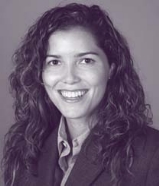 Emma Aguila, Ph.D., was born and raised in Mexico. From an early age, she had an interest in the health and socioeconomic disparities between her country and the United States. This interest later focused on the economics of aging when, as an undergraduate at the Instituto Tecnologico Autonomo de Mexico, she took a course that covered the Life Cycle Model and how labor trajectories affect well-being during retirement.
Emma Aguila, Ph.D., was born and raised in Mexico. From an early age, she had an interest in the health and socioeconomic disparities between her country and the United States. This interest later focused on the economics of aging when, as an undergraduate at the Instituto Tecnologico Autonomo de Mexico, she took a course that covered the Life Cycle Model and how labor trajectories affect well-being during retirement.
Aguila has cultivated her zeal for understanding the health and economics of aging through her research. She has been recognized for her work by receiving the Inter-American Award for Research on Social Security in 2007 for her Ph.D. dissertation. With the RAND Corporation, the government of the State of Yucatan, Mexico, and other international experts, Aguila is now designing and analyzing a pension program for poor older adults living in Yucatan. The program is the first to evaluate poverty alleviation policy for the elderly living in the region and will follow the participants over time, before and after the randomized intervention. “The main goal of this research effort is to improve the well-being of the elderly population and to contribute to the design of poverty policies around the world,” Aguila said.
Aguila learned about the Summer Institute while working as a pilot investigator at the Center for Health Improvement for Minority Elders (CHIME), at University of California, Los Angeles. Several co-workers highlighted the importance of the NIA Summer Institute for developing researchers, like herself.
Monique G. Cola, Ph.D.
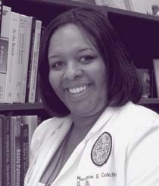 The brain has always fascinated Monique G. Cola, Ph.D. While studying for her Master’s degree in pathology (subspecializing in neuropathology) and Ph.D. in neuroscience at Tulane University, Cola worked in a neuroscience research lab. There she examined the brain of primates (non human and human) post-mortem to better understand how Alzheimer’s disease affected specific areas of the brain. This lab experience led to her interest in studying the relationship between brain structure and function. Cola considered the influence of aging processes a natural part of her work.
The brain has always fascinated Monique G. Cola, Ph.D. While studying for her Master’s degree in pathology (subspecializing in neuropathology) and Ph.D. in neuroscience at Tulane University, Cola worked in a neuroscience research lab. There she examined the brain of primates (non human and human) post-mortem to better understand how Alzheimer’s disease affected specific areas of the brain. This lab experience led to her interest in studying the relationship between brain structure and function. Cola considered the influence of aging processes a natural part of her work.
Cola now conducts human clinical research using magnetic resonance imaging to better understand how structural changes in the brain may lead to cognitive impairment. She is particularly interested in investigating the progression of AD in African Americans explaining that, until recently, little research has been conducted on how AD affects this population.
Cola also studies how health issues common among African Americans, combined with limited access to health care, may lead to a delayed diagnosis of AD. This broad approach to research is one that Cola suggests other researchers consider, “I would tell others that if they are interested at all in aging research to attack it from all perspectives since aging encompasses so many different topics.”
Cola learned about the Summer Institute from her mentor, S. Michal Jazwinski, Ph.D., whom she met through her research at Tulane University. Jazwinski, a member of NIA’s National Advisory Council on Aging and director for the Tulane Center for Aging, told her that as a newcomer in the field of aging, she “absolutely needed to go.” She is glad she took his advice.
Sara Espinoza, M.D.
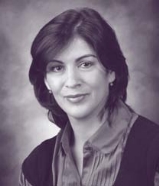 Sara Espinoza, M.D., knew from the start of her career that she wanted to care for older adults. She did a rotation with a geriatrician in her fourth year of medical school and loved the complexity of her patients and hearing about their life experiences. She enjoyed the challenges of managing multiple chronic medical conditions, while keeping patient goals at the core of their medical care.
Sara Espinoza, M.D., knew from the start of her career that she wanted to care for older adults. She did a rotation with a geriatrician in her fourth year of medical school and loved the complexity of her patients and hearing about their life experiences. She enjoyed the challenges of managing multiple chronic medical conditions, while keeping patient goals at the core of their medical care.
Following medical school, Espinoza had a research fellowship at Johns Hopkins University in geriatrics and gerontology. She became intrigued with finding a physiological explanation for why older adults had varying levels of decline and other adverse outcomes when faced with minor stressors (such as a brief illness) and major stressors (such as being hospitalized for pneumonia).
Espinoza’s current research focuses on the pathophysiology of frailty among participants in the San Antonio Longitudinal Study of Aging (SALSA). Espinoza compares plasma glycoproteins between participants who are and are not frail. She says that this comparative proteomic approach (that is looking at proteins) is new to the study of frailty—a condition where older adults’ risk for multiple adverse events increases with age.
Espinoza heard about the Summer Institute through several of her co-workers who spoke highly of their experiences. She said during the Summer Institute she, “appreciated hearing about research not exactly related to my field of study because it allowed me to expand my thinking on my own work and think about it in different ways.”
Elizabeth Galik, Ph.D.
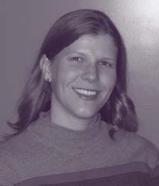 As a nurse practitioner in a long-term care facility, Elizabeth Galik, Ph.D., observed notable differences in how older adult patients with Alzheimer’s disease and with other dementias handled acute illness (like pneumonia) or changes in their healthcare (like getting a new caregiver). She observed that some patients responded remarkably better than others to these challenges in terms of physical function, activity levels, and perceived quality of life. Galik was interested in knowing what contributed to these differences.
As a nurse practitioner in a long-term care facility, Elizabeth Galik, Ph.D., observed notable differences in how older adult patients with Alzheimer’s disease and with other dementias handled acute illness (like pneumonia) or changes in their healthcare (like getting a new caregiver). She observed that some patients responded remarkably better than others to these challenges in terms of physical function, activity levels, and perceived quality of life. Galik was interested in knowing what contributed to these differences.
“I noticed that older adults with moderate to severe cognitive decline who were kept involved with their care and regularly occupied with their social and physical environments appeared to have slower functional decline, demonstrated an improved mood and behavior, and caused less caregiver burden compared to patients who were not engaged,” said Galik.
These observations stuck with Galik throughout her doctoral studies at the University of Maryland, School of Nursing. With guidance from her mentor, Barbara Resnick, Ph.D., professor of Nursing at University of Maryland School of Medicine and a speaker at the Summer Institute, and with funding by the John A. Hartford Foundation, Galik tested different self-efficacy-based, restorative-care interventions for older adults with cognitive impairment living in nursing homes. Restorative care focuses on helping patients restore and retain physical function and quality of life. Galik’s current research builds on this interest and incorporates a social ecological approach, one that accounts for the interaction between intrapersonal, interpersonal, environmental, and institutional factors.
S. Duke Han, Ph.D.
 From high school through graduate school, S. Duke Han, Ph.D., has had experiences leading to his interest in cognition in older adults. A member of the National Honor Society in high school, Han did community service in a dementia wing of a retirement home, an experience that solidified his desire to pursue work with older people. While at Duke University, Han worked with a research group that was interested in cognitive decline following cardiac bypass surgery. This work began his career in psychology research and fostered his interest in the interaction between genetics and cognition. While at graduate school at University of Massachusetts in Boston, Han learned how functional magnetic resonance imaging (fMRI) could be used to look at the brain while it actively processes a cognitive task. Functional MRI has been a cornerstone to his research approach ever since.
From high school through graduate school, S. Duke Han, Ph.D., has had experiences leading to his interest in cognition in older adults. A member of the National Honor Society in high school, Han did community service in a dementia wing of a retirement home, an experience that solidified his desire to pursue work with older people. While at Duke University, Han worked with a research group that was interested in cognitive decline following cardiac bypass surgery. This work began his career in psychology research and fostered his interest in the interaction between genetics and cognition. While at graduate school at University of Massachusetts in Boston, Han learned how functional magnetic resonance imaging (fMRI) could be used to look at the brain while it actively processes a cognitive task. Functional MRI has been a cornerstone to his research approach ever since.
Han is using functional neuroimaging to identify regions in the brain that may be recruited to compensate for preclinical declines in episodic memory. For example, he has looked at the brains of older, nondemented people who are at a greater genetic risk for developing Alzheimer’s disease while they processed a memory task. Han believes that if scientists can better understand how the brain compensates for cognitive decline, they may be able to focus pharmacological and other interventions to delay or offset some of the memory problems in presymptomatic AD patients.
Theodore F. Robles, Ph.D.
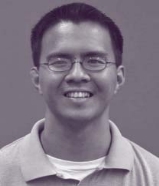 Theodore “Ted” Robles, Ph.D., began his research training in psychoneuroimmunology, a field that explores how psychological factors, particularly stress, affect the immune system and impact health. However, unexpected sources of inspiration sent him in his current research direction.
Theodore “Ted” Robles, Ph.D., began his research training in psychoneuroimmunology, a field that explores how psychological factors, particularly stress, affect the immune system and impact health. However, unexpected sources of inspiration sent him in his current research direction.
“I became interested in studying marriage, physiology, and health in retiring adults in part because I was curious about how retirement was going to impact the married couples that I know, like my parents and in-laws,” said Robles. He explained that retirement tends to make happy marriages happier and unhappy marriages more unhappy. He wanted to study how health was influenced by changes in marital quality during the retirement transition, and determine what biological mechanisms explain how happy or unhappy marriages affect health. He feels this link becomes more important with age, when people become more vulnerable to disease.
Robles learned about the Summer Institute while in graduate school from a post-doc alumnus who had a good experience. Robles saw the Summer Institute as an opportunity to have an intensive training experience in a pleasant setting, surrounded by people from different disciplines interested in similar research issues.
Click here to see how to apply to the 2009 NIA Summer Institute on Aging Research.
Noted Geriatrician Joins NIA as Deputy Director
Marie A. Bernard, M.D., a noted geriatrician and educator from the University of Oklahoma, has been named deputy director of the NIA, effective October 12. Bernard brings exceptional skills and training as a physician, educator, administrator, and investigator to the position at the NIA, where she will take a major leadership role in directing the nation’s research program on aging.
“Dr. Bernard has, throughout her career, sought to support and improve the evidence base which forms the foundation for geriatrics and the care of older people,” stated Richard J. Hodes, M.D., NIA Director. “I look forward to having her expertise and energy at the NIA, as we continue our efforts to address the needs of a rapidly aging population.”
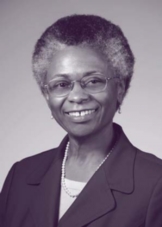 Bernard comes to the NIA with a broad background in geriatrics and research. Most recently, she served as the Donald W. Reynolds Chair in Geriatric Medicine and professor and chairperson of the Donald W. Reynolds Department of Geriatric Medicine at the University of Oklahoma College of Medicine. Bernard was also associate chief of staff for Geriatrics and Extended Care at the Oklahoma City Veterans Affairs Medical Center.
Bernard comes to the NIA with a broad background in geriatrics and research. Most recently, she served as the Donald W. Reynolds Chair in Geriatric Medicine and professor and chairperson of the Donald W. Reynolds Department of Geriatric Medicine at the University of Oklahoma College of Medicine. Bernard was also associate chief of staff for Geriatrics and Extended Care at the Oklahoma City Veterans Affairs Medical Center.
She recently served as president of the Association for Gerontology in Higher Education and as president and chair of the board of the Association of Directors of Geriatric Academic Programs. Bernard also has participated in a wide range of committees and activities from journal editorship to board service in a number of professional medical and aging organizations. She is board-certified in internal medicine and geriatric medicine.
Bernard’s own research interests have included nutrition and function in aging populations, with particular emphasis on ethnic minorities. She has written numerous journal and chapter articles on geriatric care, nutrition, medication issues, and health problems among minorities.
As a member of the NIA’s National Advisory Council from 2002 to 2005, Bernard became familiar with the Institute’s research and grant process, from an administrative point of view. “I have been impressed with the work of the NIH, and the NIA in particular, since I was a house staff member at Temple University Hospital,” she commented. “The work that comes from the Institute serves as the basis for much of what we do in geriatric medicine.”
“It is a great privilege for me to join the NIA team and help in developing future directions for that research,” she added. “There is quite a bit yet to do, particularly as we face the silver tsunami of baby boomers that will start turning 65 in 2011. There will be particular challenges since there will be even greater diversity in this population as a result of increased numbers of minority and ethnic elders.”
As the daughter of two Oklahoma physicians—a surgeon trained in oncologic surgery and an internist—Bernard had an early introduction to medicine when she and her sister would accompany their mother on house calls and their father into the operating room. She found her own aptitude for sciences in college and pursued the study of medicine.
A graduate of Bryn Mawr College, Bernard received her medical degree from the University of Pennsylvania and trained in internal medicine at Temple University Hospital in Philadelphia,where she also served as chief resident. While on faculty at Temple, Bernard discovered her interest in older people. She found that her patients were among the oldest and sickest in the practice. They were also the most interesting, she says, based not only on their medical complexity, but also on their life experiences. A mini-fellowship in geriatrics with the Geriatric Education Center of Pennsylvania clinched the career choice. “The training was an epiphany for me,” she said. “I found that there was more to the care of the elderly than management of hypertension, diabetes, and coronary artery disease. I discovered a discrete body of research and scientific knowledge applicable to the elderly that was fascinating.”
She admits that geriatrics is not as glamorous a field as cardiology, surgery, or other disciplines. “Yet,” she said, “physician satisfaction surveys demonstrate that geriatricians have among the highest career satisfaction.”
Looking ahead, Bernard believes, the healthcare system will of necessity have to be reconfigured to address the aging of the population. And there will be, more than ever, a need for research and expertise in geriatrics.“Given that we can anticipate record numbers of octogenarians and centenarians, there are likely to be new challenges in understanding the aging process, geriatric syndromes, and disease presentation and management,” she said. “These will best be approached through new discoveries in research on health and aging.”
Getting a Good Night’s Sleep—Not Just a Luxury
Most people know that getting a goodnight’s sleep is good for them. The proof is in how they feel afterwards—well-rested and perhaps at ease or more alert. NIA supports studies to better understand how sleep influences health, particularly for older adults.NIA also supports research on how sleep patterns change with age and how risk for sleep problems differs among Caucasians and African-Americans.
Investigators have identified physiological benefits to getting 7 to 9 hours of sleep each night. For instance, deep sleep triggers the body’s release of specific hormones that help it recuperate from being sick, repair cells and tissues, and build muscle mass. Scientists have also found that not getting enough sleep can cause serious health problems. The less people sleep, the more likely they are to be overweight or obese, develop diabetes, and increase their risk of high blood pressure and heart disease.Lack of sleep can also result in memory problems, depression, and falls leading to long-term injuries.
 “As people get older, the health risks associated with sleep deprivation can become more dangerous,” says Andrew Monjan, Ph.D.,M.P.H., Chief of NIA’s Neurobiology of Aging Program. “That is a reason why we need to understand how sleep might change with age.”In the chapter “Sleep in Aging,” that Monjan wrote for Sleep Disorders: Their Impact on Public Health (Pandi-Perumal, S.R. & Leger, D., eds.),he provides an overview of research on sleep in older adults.
“As people get older, the health risks associated with sleep deprivation can become more dangerous,” says Andrew Monjan, Ph.D.,M.P.H., Chief of NIA’s Neurobiology of Aging Program. “That is a reason why we need to understand how sleep might change with age.”In the chapter “Sleep in Aging,” that Monjan wrote for Sleep Disorders: Their Impact on Public Health (Pandi-Perumal, S.R. & Leger, D., eds.),he provides an overview of research on sleep in older adults.
The good news: sleep problems are not part of normal aging. As described in Monjan’s chapter, research has found that while people may experience variations in their sleep-wake patterns with age (for example, waking up earlier than they did when they were younger),there is no difference in the circadian period(the body’s innate clock) between healthy younger and older individuals. According to the research, this stability in circadian timing is important to well-being.
The bad news: even though sleep problems are not part of normal aging, sleep is one of the most common health-related complaints among older adults—insomnia affects approximately one-third of the older American population. Research suggests that African-Americans maybe at even greater risk of sleep disorders and African-American older adults have poorer sleep than Caucasian older adults(Lauderdale D.S., et al., 2006). More bad news is that despite being so prevalent, many sleep problems go unrecognized, are not treated properly, or are not taken seriously. Sleep issues might be a side effect of a more serious medical condition or a response to changes in environment and, if ignored,could lead to larger problems.
Researchers are investigating possible ways to help people with sleep problems. Bright light therapy (also known as phototherapy) and melatonin treatment are two methods being studied.
“People need to remember that sleep is not merely a luxury, it’s an important step for maintaining their health. If they have a problem, they should seek help,” says Monjan.
NIA’s Health Disparities Resource Persons Network
NIA has newly developed, in collaboration with NIA’s National Advisory Council on Aging,Task Force on Minority Aging, the Health Disparities Resource Persons Network. The web-based networking tool is part of NIA’s continuing efforts to provide technical and capacity-building assistance in the area of minority aging and health disparities research.It will help connect early career scientists with investigators who have significant experience in aging research, minority health, health disparities, and minority recruitment and retention. Through this interaction, junior investigators may get advice for how to start or advance their initiatives in aging research. For example, if you are a junior researcher with an interest in conducting a study with American Samoans, the resource directory may help direct you to a scientist who has experience recruiting older participants from this underrepresented population. The resource is also available to NIA community partners seeking information on aging.
“We encourage investigators who have experience working with diverse populations and older adults to register to be a mentor in the Network. It is a great opportunity to help early career scientists become future leaders in aging and health disparities research and continue this vital area of work,” says J Taylor Harden, Ph.D., R.N., F.A.A.N., NIA Assistant to the Director for Special Populations.
Users will be able to search for an expert and send a request to NIA for his or her contact information. Scientists registered in the Network may be contacted by the NIA to serve as expert panel members, workshop participants, mentors,advisors and/or reviewers. (All personal contact information will be kept confidential.) If you are interested in joining or using the resources available on the Network, please visit: www.nia.nih.gov/ResearchInformation/HDToolbox.
NIA Launches Spotlight on Aging Research
 NIA has launched Spotlight on Aging Research:News and Notes from the National Institute on Aging.SOAR, for short, is designed to inform the research community, aging-service providers,healthcare professionals, policy makers, media,and others, about the Institute’s programs,people and activities.
NIA has launched Spotlight on Aging Research:News and Notes from the National Institute on Aging.SOAR, for short, is designed to inform the research community, aging-service providers,healthcare professionals, policy makers, media,and others, about the Institute’s programs,people and activities.
Each issue of SOAR highlights recently published findings from NIA-conducted or sponsored research, specific areas of research,upcoming professional development events and other scientific meetings, new professional and consumer-oriented resources available from the Institute, and links to current funding opportunities. The inaugural issue of SOAR,now online, discusses research examining the link between caloric restriction and life span,and genetic research among residents of Sardinia, Italy. Visit www.nia.nih.gov/NewsAndEvents/SOAR/.
News Flash: Learning How to Talk to the Media
Some people pursue a career in research simply because they love science. Others choose research because they want to solve problems affecting people or identify ways to prevent diseases or disorders. Still others become researchers because they want to better understand the innermost workings of the body. Whatever your reason, you may not have expected that speaking with the media about your research might become one aspect of your job. And yet, as an aging public seeks to understand more about how individuals and societies grow older, for many investigators being interviewed by reporters is a regular and important part of their work.
 To help new researchers think about how they will talk with the press—and by extension, the public—NIA Summer Institute participants receive media training from NIA’s Office of Communications and Public Liaison.This two-hour session offers practical suggestions for describing complex research in a consumer-friendly way, keeping the interview focused on important points,and feeling comfortable in front of a camera.
To help new researchers think about how they will talk with the press—and by extension, the public—NIA Summer Institute participants receive media training from NIA’s Office of Communications and Public Liaison.This two-hour session offers practical suggestions for describing complex research in a consumer-friendly way, keeping the interview focused on important points,and feeling comfortable in front of a camera.
“It was extremely helpful. I didn’t think my research would be of interest to reporters or at all controversial. After attending the workshop, I realize now that I might have been mistaken and I feel much better prepared to handle the press should they be calling,” says one Summer Institute participant.
The following are some suggestions shared with Summer Institute participants for working with the press:
- When a reporter calls, arrange to call them back (or have your institution’s press office do so) at a time that is convenient for you. This gives you time to prepare the points you want to cover.
- Decide on three or four key messages you want to convey. Deliver your key point first as time may be short. Talk about what YOU want to talk about.
- Use simple, direct language. Deliver your message and repeat it, repeat it, repeat it.
- Don’t go “off the record” or talk just to fill a silence.
- Don’t be afraid to say “I don’t know” if you don’t and, if possible, offer to get back to the reporter with the requested information or suggest another resource or expert in the field.
- You can try to ask the reporter if he or she will share with you a final draft of your comments. It is not standard practice, but occasionally, given the technical nature of science, a reporter may agree.
One final suggestion: try to view talking with the press as a valuable opportunity to let the public know about the importance of aging research.
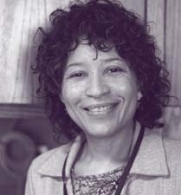 New Program Analyst Joins NIA’s Special Populations
New Program Analyst Joins NIA’s Special Populations
NIA welcomes Andrea Griffin-Mann as a Program Analyst for Special Populations. Griffin-Mann will help organize the Summer Institute and other NIA Special Population-related activities. She has over 15 years experience coordinating conferences and workshops and comes to NIA with an educational background in communication and sociology from American University in Washington, D.C. She resides in Silver Spring, Md., with her family.
LET US HEAR FROM YOU!
We are always interested in hearing from minority program faculty, alumni, and students. Please contact us and let us know where you are and what you are doing.
Work Group on Minority Aging
Office of the Director
National Institute on Aging
Building 31, Room 5C35
Bethesda, MD 20892-2292
Phone: 301-496-0765
Announcing the 2009 NIA Summer Institute on Aging Research
Application Deadline: Friday, March 6, 2009
The National Institute on Aging (NIA) announces the annual Summer Institute on Aging Research, a week long workshop for investigators new to aging research, focused on current issues, research methodologies, and funding opportunities. It is one of the premier short-term training summer institutes for new investigators in aging research. The program includes consultations on the development of research interests. The 2009 Summer Institute will be held July 11 – 17 in Queenstown, MD. Support is available for travel and living expenses. Applications are due Friday,March 6, 2009. To increase the diversity of participants, minority investigators are strongly encouraged to apply. You must be a U.S. citizen,non-citizen national, or permanent resident. For additional information and an application form, contact Andrea Griffin-Mann at 301-496-0762 or griffinmanna@nia.nih.gov.
Links: Minority Research and Training newsletter is published twice a year by the Work Group on Minority Aging, Office of the Director, National Institute on Aging, Building31, Room 5C35, Bethesda, MD 20892. Thanks to Writer/Editor Megan Homer and Contributors Allaire Guralnik and Anne Decker. This is an administrative document.
